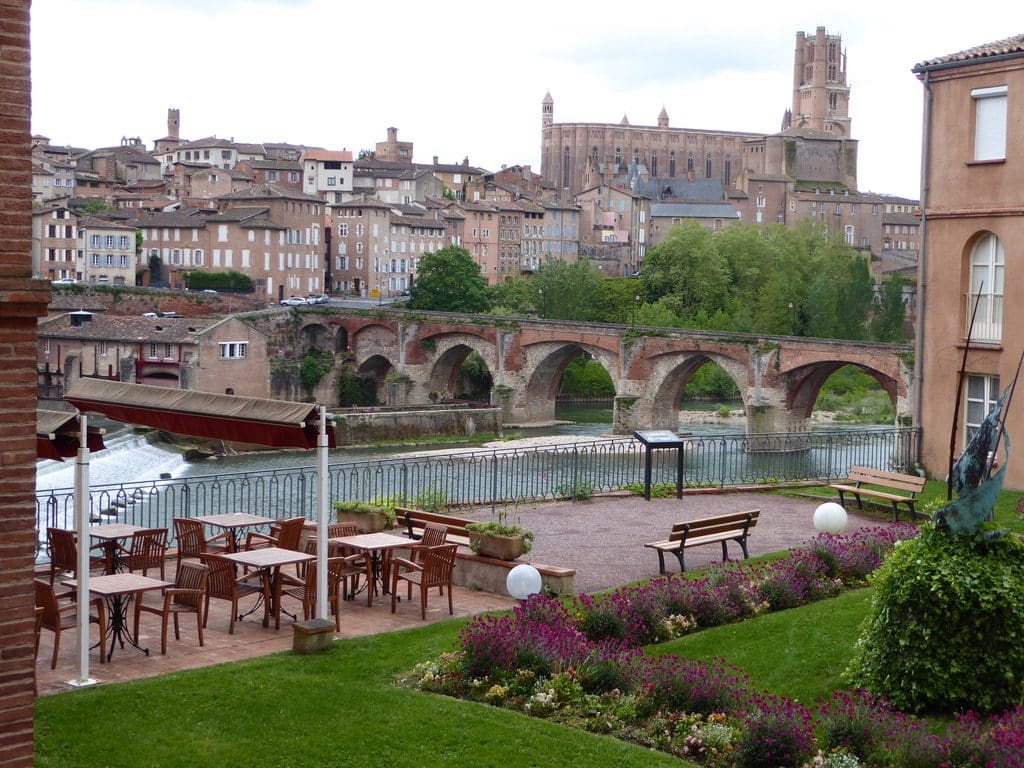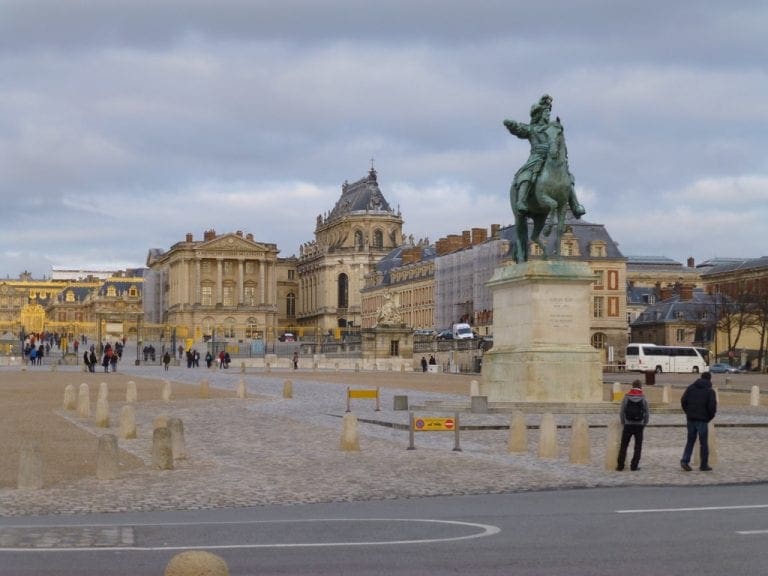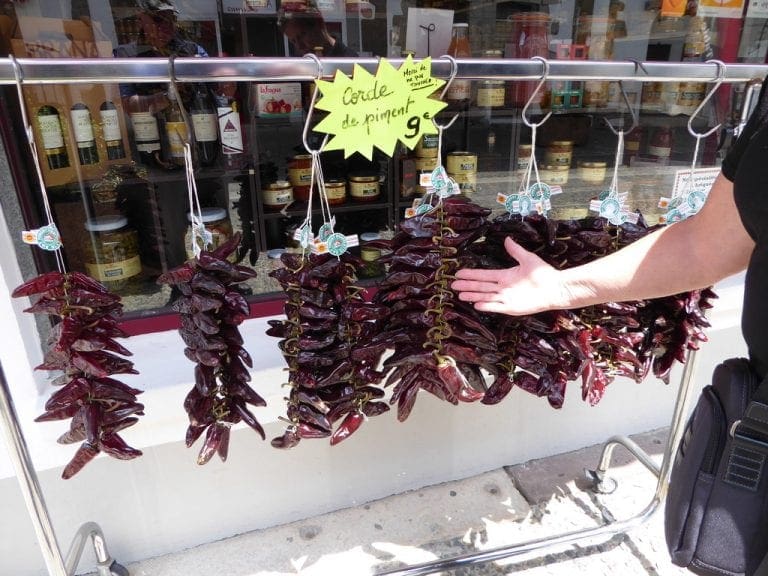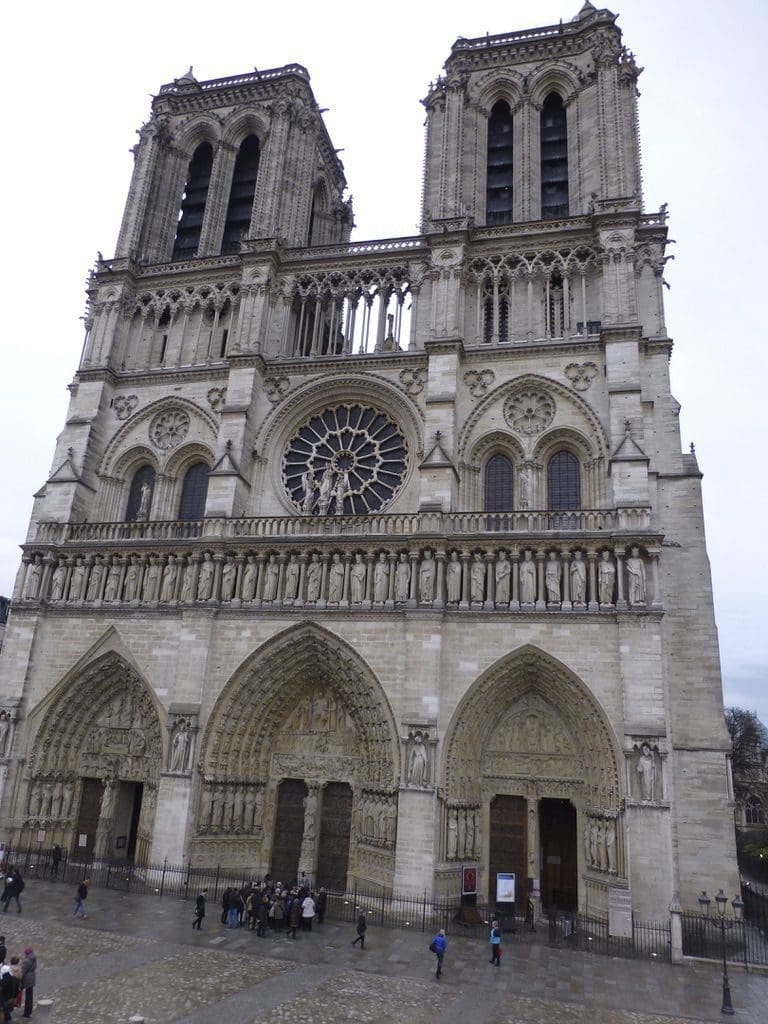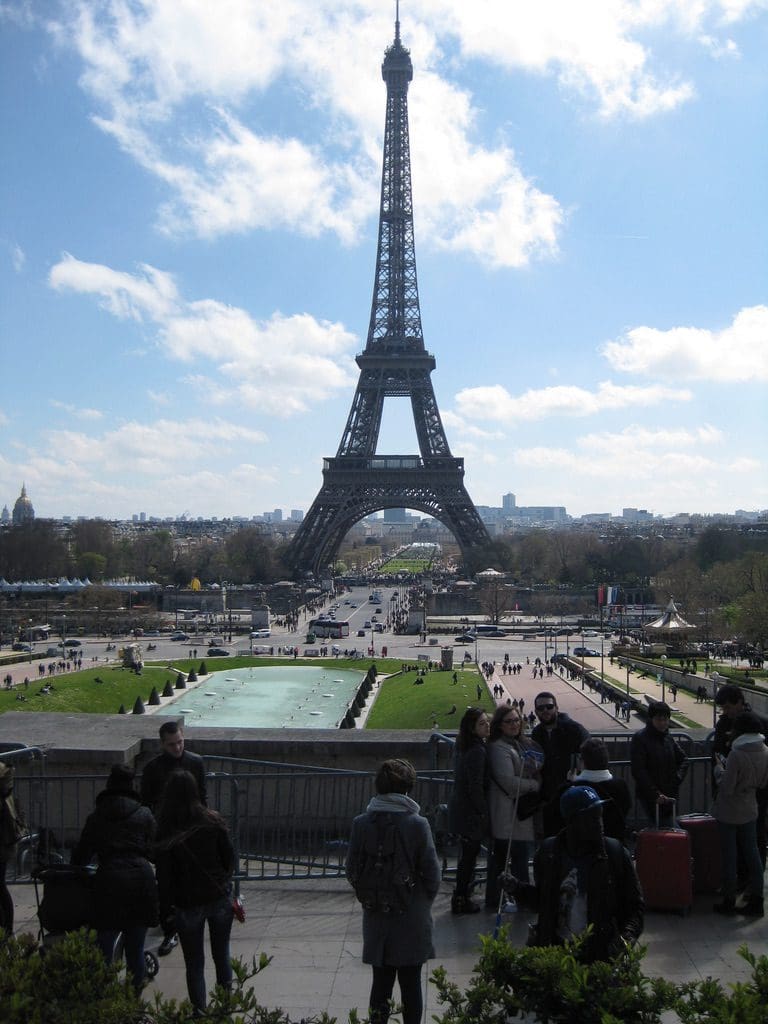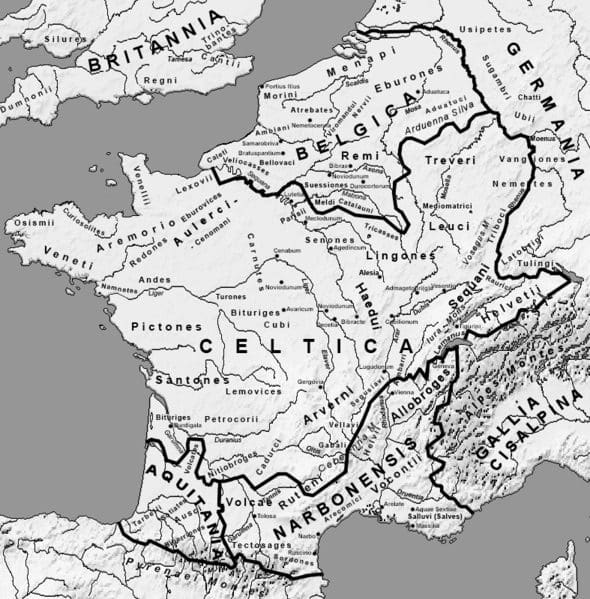France Road Trip – week 4 – Albi
Saturday 30 April 2016. Day 23. Now in Albi. A longish drive over from L’isle-sur-la-Sorgue to a different planet. The first part of the drive was towards and then through!!! Avignon. (Over the bridge and all. Why does the SatNav do that? Rather than bypass.) Then, by autoroute to Montpellier and up to Millau (pronounced mee-oh) then 100 km of beautiful upland pasture with cows. We were entertained by our Australian TomTom device’s pronunciation of places such as Toulouse (towel-louse ie something to dry yourself with and something you don’t want in your hair; instead of too-lose – to lose your way.) Just before Millau with its incredible long bridge (via duct). It sleeted and then snowed on us. The picnic at a road-side stop was a very chilly halt. However, we have left the prickly country of Provence for lush green Midi-Pyrenees.
A bit of history. Albi was the centre of a major genocide by the Catholic pope Innocent III who burned and killed all the Albigensians – who had the misfortune to have different slant on Christianity. Rome killed all those who believed in a different interpretation. Their main offenses? – they were vegetarians and refused to pay the 10% tithe imposed by the Catholics. There was also a bit of a land dispute – the church wanted someone else’s land and took it with maximum force. Humm – a good reason to kill them all?
Sunday 1 May Day 24. A very quiet day in Albi. We strolled down town across the old bridge – built about 1035 and one of the oldest bridges still in use in Europe – it connected the left bank with the right bank across the Tarn River. Allowing both sides to prosper. Towering over all is the cathedral and bishop’s house (with extra fortification because the bishop was such an authoritarian arsehole hated by all. I do like my cathedrals with fortifications and arrow slits. It seems to emphasise the peaceful nature of the religion.)
We had morning coffee and wine in the town square. I did like that. Sitting in the sun not doing much. The wine was a white Gaillac (pronounced Gah-yack) and extremely drinkable – Sav Blanc and Mauzac (Mao-Zak). Helen bought lunch at the covered market. This is an extremely good market with about 50 shops/stalls in an enclosed building. Very high quality food. One of the best markets I’ve seen. Lineups at the more popular stalls.
Monday 2 May. Day 25. A slow start. We talked politics till 10, then headed to the fortified hill-top bastide of Puycelsi. 50+ young men from this tiny village were killed at Verdun or Somme in WWI. Imagine. Killing 50+ of the able bodied young men would have destroyed the village and goes some way to explaining these abandoned bastides. Nearby Cordes-sur-Ciel is the famous Bastide to where tourists now flock. Most Bastides were built during the 100 years war to establish a foothold for English or French. Bastides were a fortification without a castle – a premeditated community effort at self-defence without a castle. By the 1960s many were in ruins (in 1968, Puycelsi had just 3 families – now 110 people live here). Considerable work has been and is being done to rescue the old buildings from ruin and collapse. A tough place to live.
Tuesday 3 May. Day 26. Sit around morning. Discussion and research about Pastel (indigo or woad) which did form the major industry of this Albi-Toulouse region until mid-1500s. This blue indelible dye that comes from the leaves of a plant was called blue-gold because of its value. In 1404, 27 ships from Bayonne & Bordeaux landed 127 cubic metres of Pastel in Bristol. America’s war of independence was funded by barrels of indigo. Initially, Albi was the centre of production and the merchants of the town became very rich – but complacent and greedy and the industry shifted to Toulouse. The Albi-Toulouse-Carcassone triangle became known as the land of plenty. But, that lot also got too greedy and the industry shifted to a different plant grown in India and elsewhere. That big bishop’s palace and cathedral we can see over the river from us would have been built on pastel/woad.
Lunch. Table du Sommelier (no reservation, though this is not recommended) – quite full – two largish groups, the one next to us an office lunch (birthday?). Three courses for €18 plus wine (Chateauneuf-du-Pap – which is an outstandly good red wine). Very good. After lunch, we had a Skype call with Keith & Libby Lugton back home at the Grange. Good to catch up. Then, we walked around the old town (again) and through the cathedral – whose out-side exudes power and whose in-side says ‘rich’. Certainly built on the richness from the Pastel business.
Wednesday 4 May. Day 27. Much discussion about economics and Australian budget. We went to the covered market and bought a prepared lunch, and a couple of bottles of the local Gaillac wine. In the afternoon, we went into town to buy a map of France to help with navigation, a bag for Helen and a hat each. Then, to the Toulouse-Latrec Museum (which is in that huge pile of a building next to the cathedral). We are both very impressed with TL, he had a skill to capture movement and personality with a few lines of a sketch. He did become famous for his advertising posters, but his earlier work (sketching in brothels – this pic shows the boredom of waiting for clients) and his understanding of human frailty is where his greatness lies. (Died young – alcoholic and syphallitic.)
Today, was a beautiful sunny and warm day. First day without my vest. In a few of the old towns, we’ve seen flocks/groups of swifts (sometimes in big flocks making loud screaming sounds). They are here in Albi in smaller numbers. The level of the water in the Tarn River has us intrigued – sometimes a trickle going over the weir, sometimes whitewater that makes a roar. On the right bank just upstream from the Old Bridge is a building that juts out into the river – water bubbles up from under it yet we have no idea of its purpose.
Thursday 5 May. Day 28. Cordes-sur-ciel (Cordes on sky). A Bastide built 1222 – after the death of Simon de Monfort – for refuges escaping the Cathar wars (nobility and rich). Several layers of ramparts and fortified town gates. We were there early with the crowds of tourists arriving just as we were leaving. Very steep pavé road up and back. Very difficult to take a photo of the town. The one to the left is mine. The one below is one showing how the town can look with the cloud below it – one of the things that has made it famous.
The find of the day was a little Blue Pastel shop just off the main drag. A lovely couple owned it – very caring and interesting. He spoke slowly and simply enough for me to almost understand him. We were given “Blue Beads of Peace” to take on a mission back to Australia.
Friday 6 May. Day 29. A visit to the covered market in the morning to get a few supplies for the next few days and to find an ATM which proved surprisingly difficult. Lunch at Le Jardin de Quatre Saisons which is just 100 m up the road and would have to be the restaurant of the week. Extremely good food and the wine selection is excellent. After a bit of recovery time, we ventured to the LaPerouse museum which is in the same building as our apartment. LaPerouse was an extremely good sailor who was given the task by Louis XVI of grabbing Australia for France. LaPerouse came via Cape Horn, Vancouver, Alaska, Russia, Japan, New Caledonia and arrived at Botany Bay on 24 January 1788 just 4 days after the First Fleet arrived. By then, Britain and France were at war again. LaPerouse’s two ships sailed away in March 1788 and were never seen again. The two ships struck a reef in the Solomon Islands. A crew was sent off for help and were never seen again. Of course, by the time someone thought, ‘I haven’t heard from LaPerouse for a while. I wonder if he is alright.’, Louis XVI had had his head chopped off and the Terror was in full swing. No one looked for LaPerouse, they had other concerns. All very sad really.
